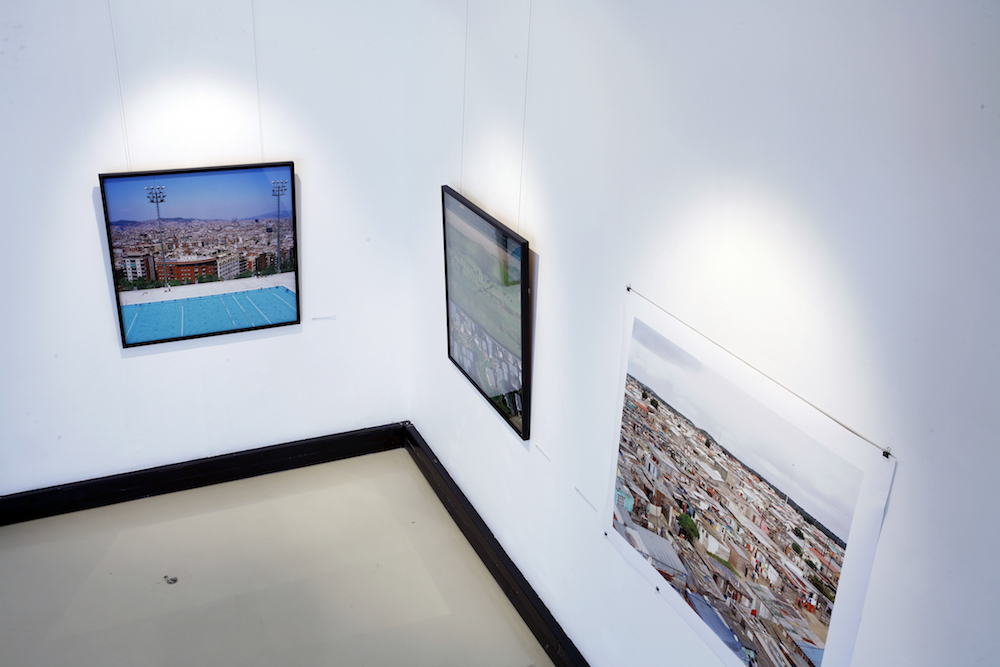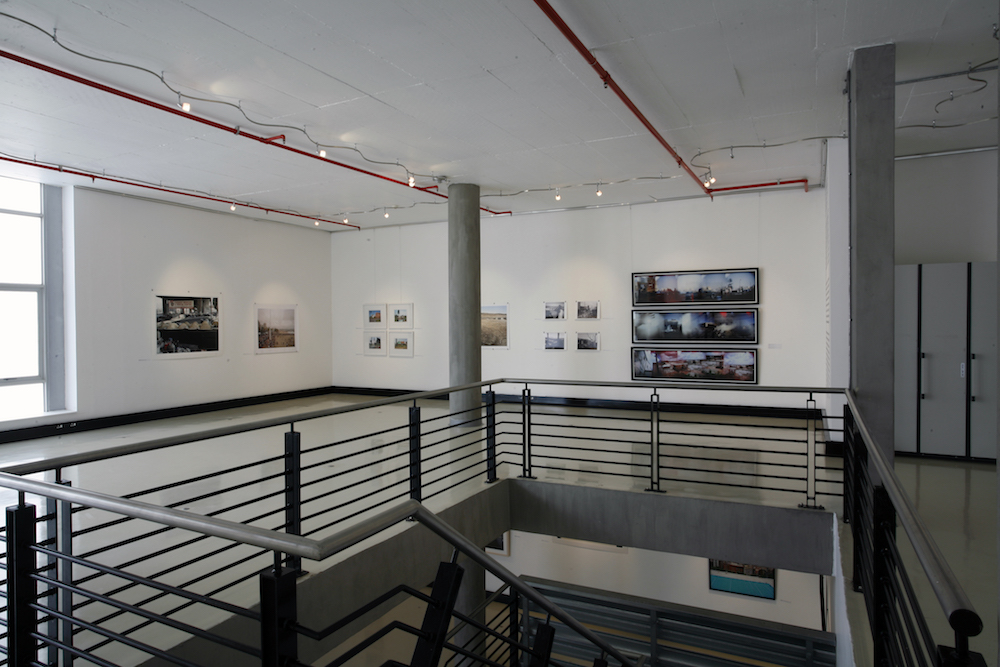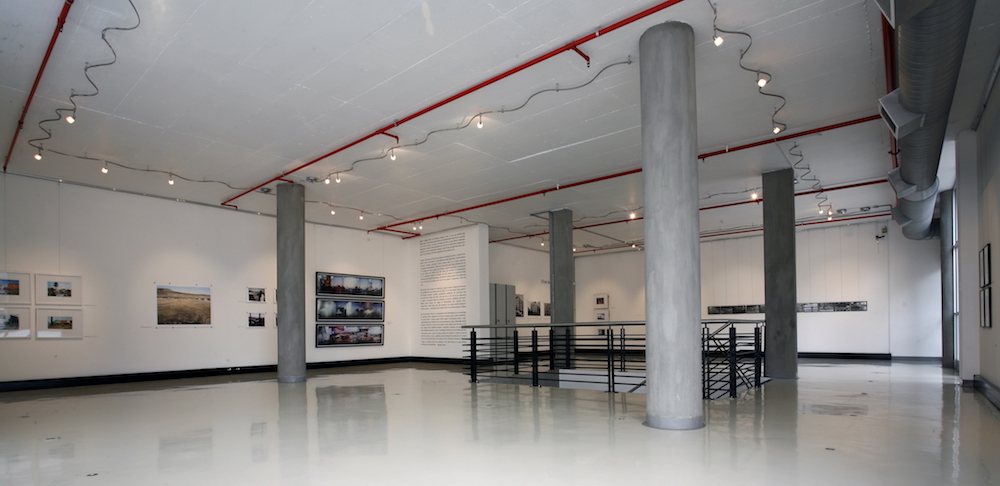CITIES IN CRISIS: PHOTOGRAPHS OF THE SOUTH AFRICA URBAN LANDSCAPE
CURATED BY MICHAEL GODBY AND DAVE SOUTHWOOD IN COLLABORATION WITH VIAD
10 April - 9 May, 2008 | FADA Gallery, University of Johannesburg
CITIES IN CRISIS: PHOTOGRAPHS OF THE SOUTH AFRICAN URBAN LANDSCAPE
Curated by Michael Godby and Dave Southwood
To our knowledge, no South African photographer to date has taken for their subject the South African city as a sociological phenomenon, that is to say, the political and experiential aspects of the South African urban landscape. Even David Goldblatt, who has been recording different parts of city life in Johannesburg and elsewhere for over 50 years, seems never to have identified the city itself as a single coherent project. To be sure, Goldblatt has produced many essays that contribute significantly to the understanding of the South African urban landscape and it has obviously been very difficult to select from his work for the present exhibition. In the event, our decision to use only recent work, and our concern to include positively heterogeneous points of view, have caused us to select just two works that seem to illustrate favourite Goldblatt themes in the fields of architecture and urban planning: the absurd vanity of failed attempts at social engineering, on the one hand, and manifest incredulity in the face of a social system that permits the grotesque juxtaposition of extreme wealth with extreme poverty, on the other.
However, if no photographer has addressed the South African city as a project, many have taken specific aspects of city life and created powerful essays around them. Again the question of selection arose in relation to these projects, over and above the issue of work that, for one reason or another, was simply not available for the exhibition. Our principle as curators was to show work that varied in terms of both the experience of the photographers – their background, their training, their age, their gender, and so on – and the different parts of the city that it represented. Moreover, we wanted to show work that provided not only information about the physical appearance of the separate parts of the city – such as the inner city, the suburbs, the informal settlements – but also, in one way or another, some sense of the experience of relating to those spaces. We are aware that we are obviously not able to cover every aspect of every city space in South Africa. And we are also aware of significant gaps in our project, caused mainly by the constraints of space and time, and the omission of potentially very interesting work on our theme. We regard this exhibition as the first installment of the project that will grow both by the inclusion of further work in future exhibitions and in the collection of essays on the project website and in published form.
The diversity of experience – of training, opportunity, exposure, etc. – of the photographers in this exhibition should suggest the impossibility of an objective record of South African city life, even with the use of the apparently scientific instrument of the camera: we hope that the juxtaposition of works in the exhibition will prompt engagement with this idea. To underline the point, we have included works by Jane Alexander and Sam Nhlengethwa that use photography as the basis of montage and collage compositions which purposefully manipulate the dimensions of space and time to render some sense of the texture and experience of a place: the physical reality is subsumed in an emotional expression. Other artists, such as Jo Ractliffe and Jean Brundrit, use multiple or serial exposures to suggest, on one level, the sense of movement through space but, on another, a quality of fractured interaction that is itself emotionally charged. Movement of another kind is indicated in David Lurie’s essay Images of Table Mountain (2006), in which the photographer circles Cape Town’s most famous landmark, passing through a sort of cross-section of South African society – and the political history that has defined its urban spaces. Lurie’s work uses expressive contrasts of tone and scale to give a sense of the turbulence of Cape Town’s social structures that are founded on a history of dispossession and marginalisation: his work chronicles the alienation and resentment on the city’s peripheries – and his own concerns about the seemingly exponential growth of impoverished suburbs. Other photographers bring a similar quality of indignation to the documentation of other aspects of the South African urban experience. Guy Tillim, for example, has recorded the apparent meltdown of social structures in Johannesburg’s flatlands where landlords routinely coerce tenants by refusing to maintain their properties and by cutting off essential services: erstwhile viable accommodation has deteriorated into over-crowded, filthy, dangerous slums. Similarly, in his essays on the Cape Flats and Beaufort West (2006), Mikhael Subotzky has described the cycle of poverty in which entire communities are trapped, and his images of new accommodation that is provided for them seem to indicate a cynical acceptance by the authorities that there can be no escape from this condition. Tillim gives expression to his view of inner-city decay in compositions that challenge the expectations of perspective, giving bifurcated movements into depth in some pictures and confrontational flattening of spatial intervals in other work. Subotzky, at least in his renderings of architecture, appears to seek to present the most informative, the most straightforward view of his banal landscape.
David Goldblatt’s record of the South African urban landscape includes both expressions of indignation at some or other official abuse of power, and the calm invitation for the spectator to enter his work and gradually grasp the significance of his arrangement of visual forms. The influence of Goldblatt’s analytical style has been enormous and many photographers of the urban landscape draw on it to represent the peculiarity of South Africa’s city spaces. Thus Sabelo Mlangeni, in Amabhilidi aseGoli (2004), presents scarcely differentiated images of tenement facades that balance a sense of the uniform banality of lower-income urban life with ideas of history, in the weathering of the architectural features, and of individual expression in the display of washing-lines or other forms of urban detritus. Dennis Gilbert and David Southwood explore the interaction of large numbers of people with extensive urban spaces. Gilbert’s photographs of Warwick Street (2007) record the clogging of Durban’s thoroughfares by the unplanned-for commercial traffic of pedestrians and street vendors: in these pictures, the massive stark forms of bridges and highways appear at odds with forms of city life they were not erected to serve. David Southwood’s high resolution images capture extraordinary detail in vast landscape spaces: in Khayelitsha (2001), tiny informal structures appear to extend to the horizon, each one giving some sign of the lives of the household that occupies it. In Durban Beachfront (2007), Southwood captured a sense of the movement of a vast tide of people through South
Africa’s city spaces, notably on holidays, such as Christmas 2007 when this photograph was taken, but by implication, if less visibly, throughout the year also. Through the concentration on fine detail these photographs speak, among other things, of the extraordinary pressures on South Africa’s cities. A rather different view of South Africa’s informal settlements is provided by the Impilo Yethu Workshop of Hout Bay. In their images these young photographers record their community from the inside, as it were, capturing the invention of many of the informal buildings and, generally, focusing on such positive aspects as cleanliness and bright colour.
All these photographs demand from the spectator some level of engagement with the scenes represented, whether in an analytical frame of mind or emotionally. Other photographers seem to postpone such response by a challenge to the very act of looking. For example, Brent Meistre (2007) claims that in Class he approaches the city as a text to be edited, a space where no obvious narrative declares itself, but one in which fragments suggest at once a rivalry between verbal and visual forms of communication and understanding, and new and unexpected contexts where meaning may be made. Similarly, in her Twin Town project (2007), Svea Josephy’s juxtaposition of photographs of South African townships with eponymous sites elsewhere opens up, as Lize van Robbroeck (2007:94-95) puts it, “delicious opportunities for a deconstructive reversal of centre and periphery, first and third worlds, and, even, original and copy”: as with Meistre, the reading is not so much within each individual image as between them and the series of ideas they generate. And Garth Walker picks up on the idea of artifice, both in the landscape itself and in its representation in photographs. His series of cellphone towers in the form of trees comments, obviously, on the position of nature in contemporary conurbations but questions also the reality of representation. Interspersed throughout the exhibition, these three essays are intended to draw attention to the acts of representation and of looking both in their own right and in relation to the other sets of work on the show.
In fact, the juxtaposition of any set of essays on the exhibition will most likely prompt consideration of the ideas of subjectivity and reflexivity in the medium of photography. The much-vaunted strength of South African photography at this time should probably be taken to mean simply strong statements by strong individual practitioners. The collection of such work around the single theme of cities in this exhibition shows clearly the openness of the project: there can be no final statement on the issue and there is plenty of space for new points of view to be represented. We hope that the present exhibition will draw attention to the city as subject in South African life and that future installments of this project will provide a platform for these new voices to be heard.
Sources cited
Meistre, B. 2007. Interview conducted in person with the author, October.
Van Robbroeck, L. 2007. Review of Svea Josephy’s Twin Cities. Art South Africa 6(3): 94-95.
CATALOGUE:
Click here for Cities in Crisis catalogue
CONFERENCE:
Johannesburg and Megacity Phenomena
PUBLICATION:
Representation & Spatial Practices in Urban South Africa
COMMENTARY:
Click here for Cities in Crisis commentary
THOUGHTS:
Click here for thoughts on the exhibition catalogue
REVIEW:
Click here for a review of Cities in Crisis




